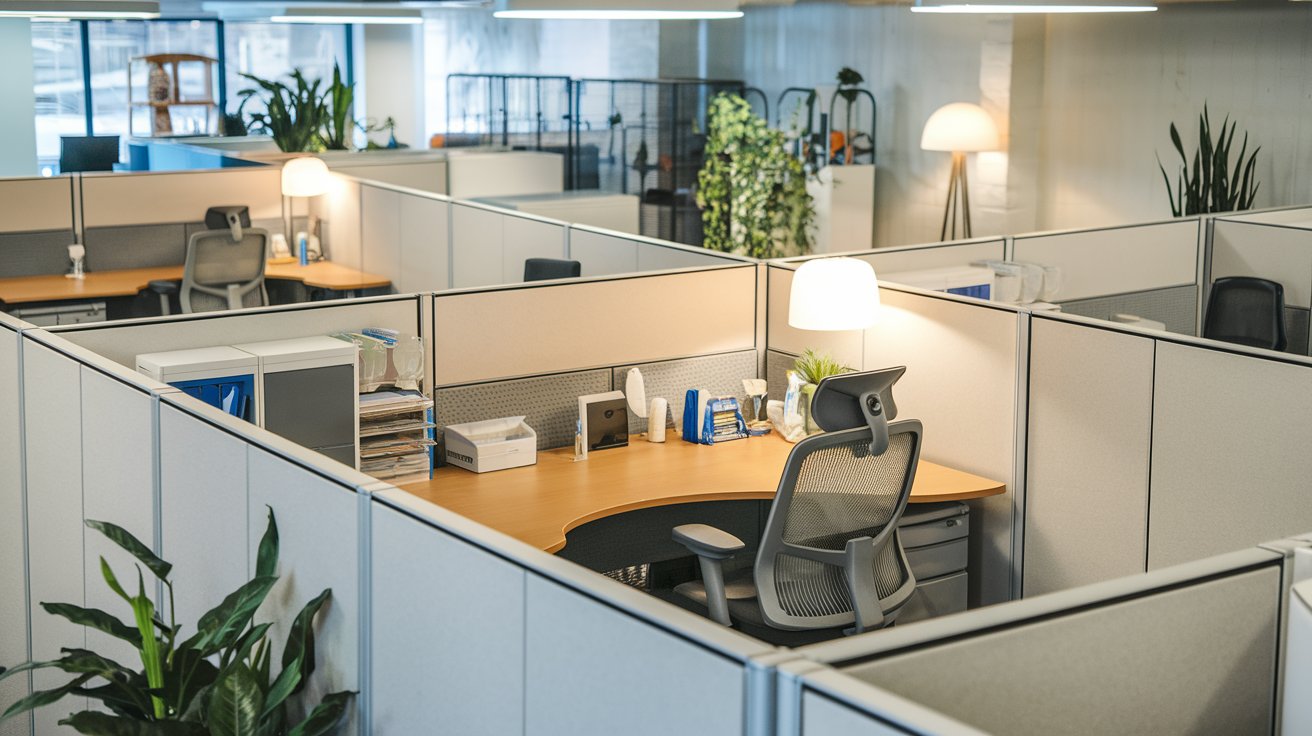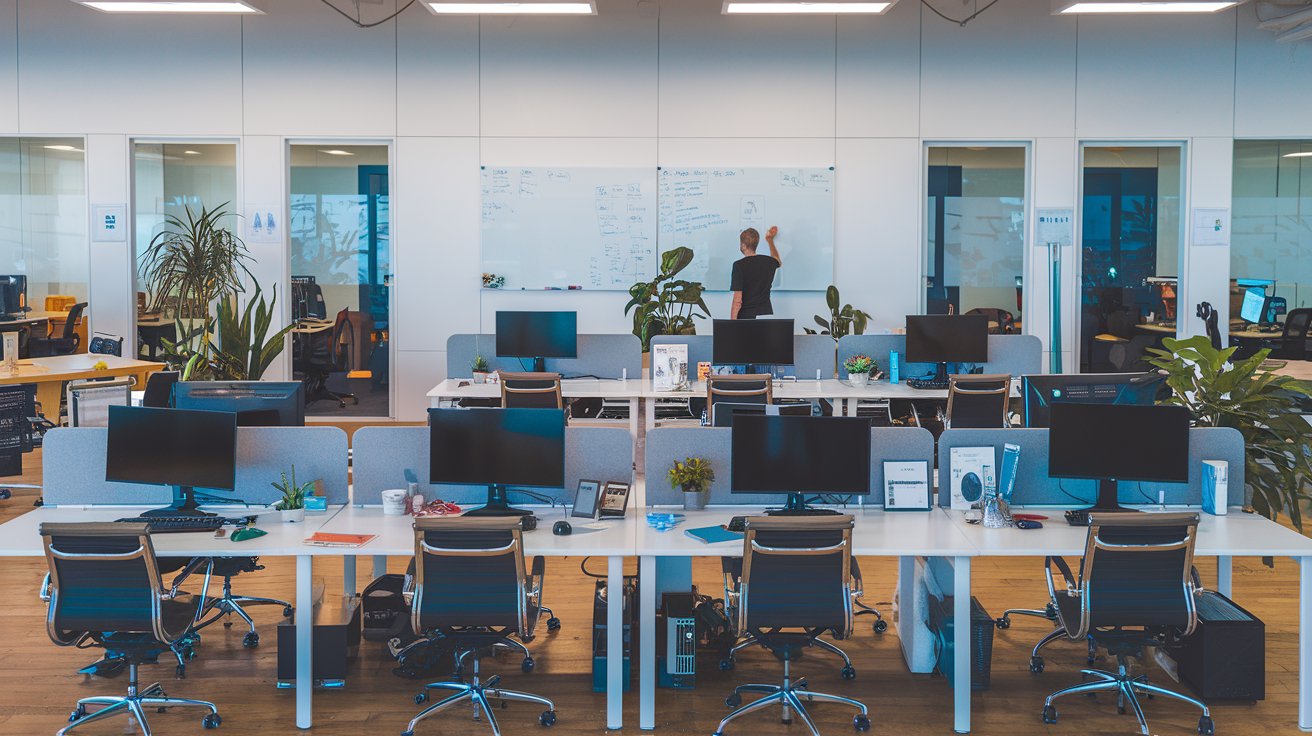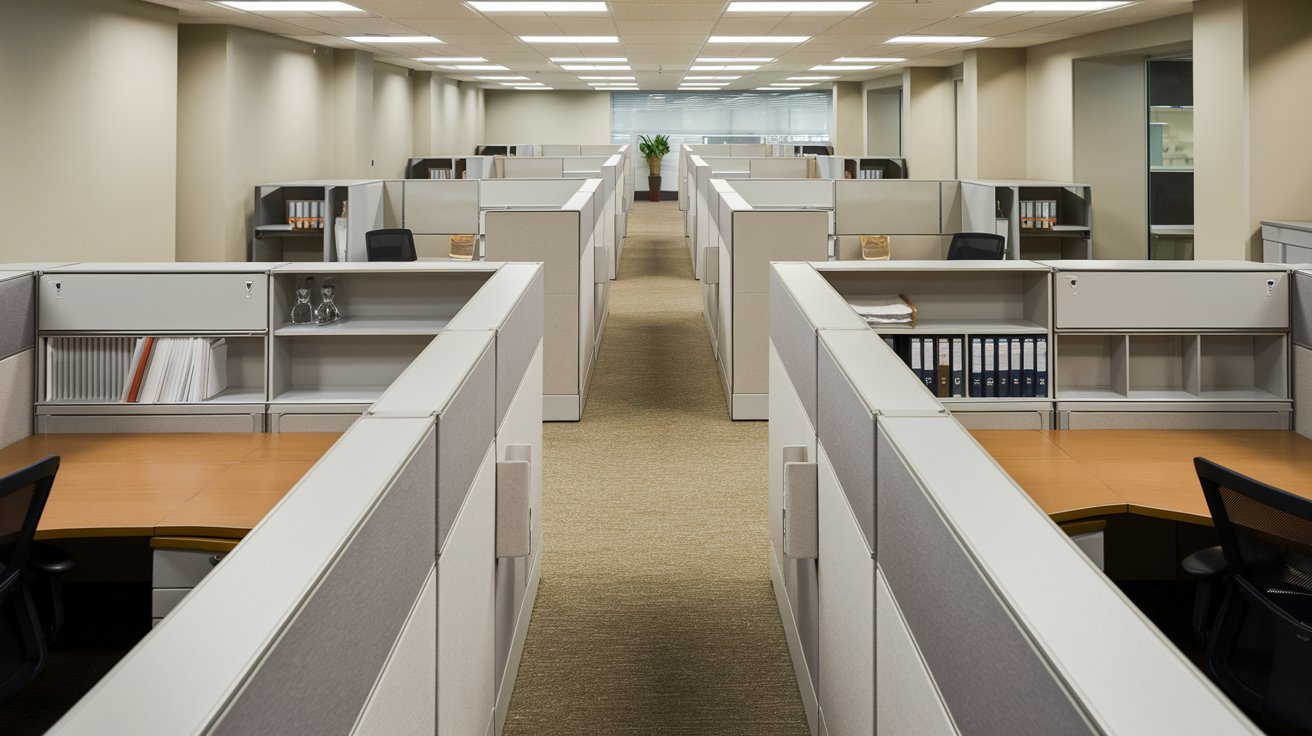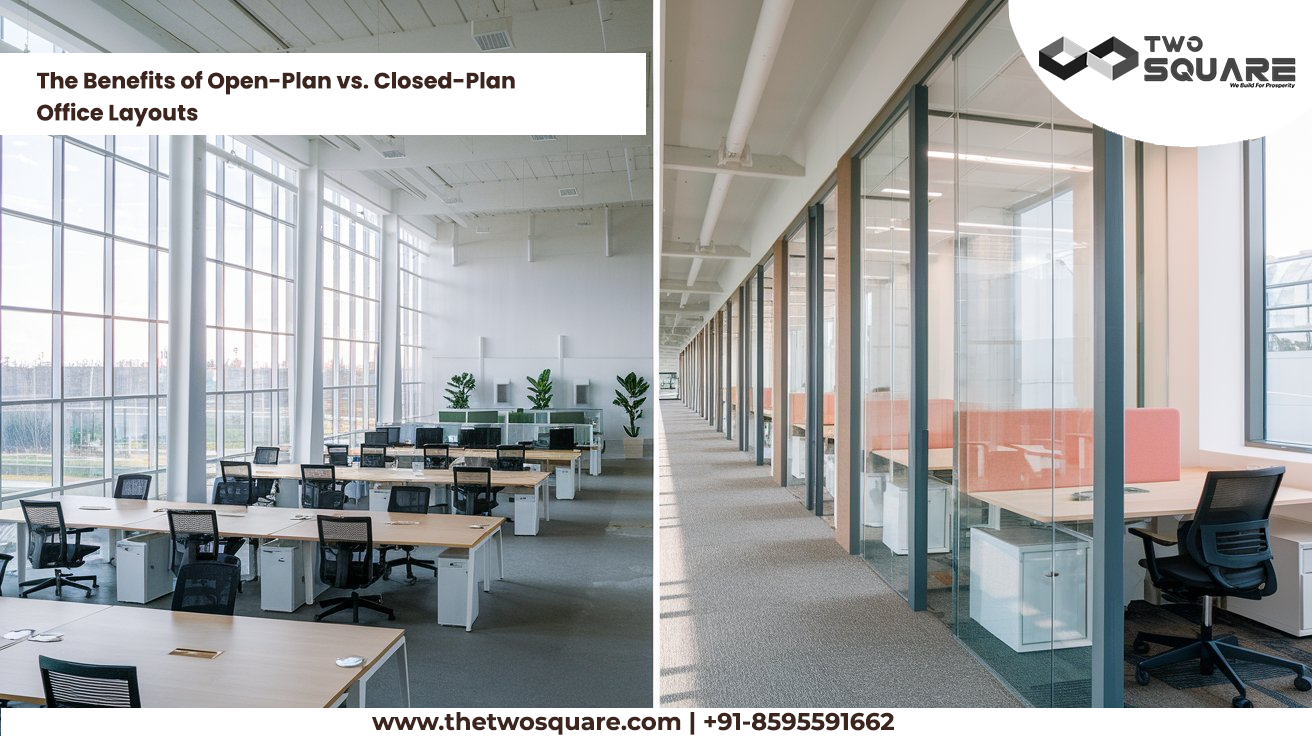The Benefits of Open-Plan vs. Closed-Plan Office Layouts
An office layout has a greater impact on an organization’s productivity than we often realize. Whether it’s a client you plan to impress or staff you want to encourage, with the right office layout, you can easily achieve your goal, making a lasting impression on both visitors and staff.
When talking about office designs, the two most prominent names that come to the mind are open-plan and closed-plan offices. While they both have their own benefits and limitations, it is crucial for businesses to choose the one that best fits their needs and maximizes productivity.

Understanding Open-Plan Offices
What Is An Open-Plan Office?
Workspace designs that consist of flexible seating arrangements and no physical barriers are called open-plan offices. These office layouts are designed to facilitate communication and collaboration among employees, improving performance and productivity.
Unlike closed office layouts where an employee is separated from the other through a wall, open-plan designs are more flexible, allowing for easy flow of air and light in the room. It has fewer barriers between employees, and can accommodate a relatively large number of people.
Key Characteristics of Open-Plan Offices:
- Fewer Barriers: An open-plan office layout consists of minimal to no physical barriers between employees. This elimination of partition or barriers allows staff to communicate and collaborate more effectively, leading to improved productivity and performance.
- Flexible Layouts: Open-plan office layouts are not rigid, meaning they do not confine employees within specific boundaries, such as a cabin or workstation. The seating arrangements in an open-office is flexible and can be modified based on the changing needs to accommodate any number of employees.
3. Natural Air & Light: Thanks to its uncluttered design, an open-office layout provides enough space for natural light and air, creating an environment which is both bright and breathable. Consequently, this positive ambience contributes to employee comfort and performance.
4. Shared Workstations: As mentioned earlier, in an open-plan offices, employees do not have assigned desks. As such, employees can change their seats when needed, choosing spots that best suit them.
5. Collaborative Workspace: It is more convenient for the employees to collaborate and work in a team within an open office, due to its barrierless design. Besides, these offices incorporate shared desks and communal tables which enable the employees to use other devices at ease, in case of emergency or when one employee is away.

Benefits of Open-Plan Offices
- Collaboration and communication: With no walls or partitions to separate them, employees are easily visible to one another in an open-plan office. This visibility allows them to communicate and collaborate more effectively, improving performance and boosting productivity.
- Natural lighting and improved aesthetics: In an open-plan office layout, there is much consideration for openness to promote natural lighting and airy feel. Additionally, these offices maintain a minimalist and modern aesthetic that feels smoothing and soft to the senses.
-
Cost-effective: Physical barriers are absent in an open-plan office design, meaning you don’t have to spend money on their construction. Hence, these layouts are both cost and time effective.
-
Scalable and flexible: Open-plan offices are flexible, thanks to their uncluttered and unrestricted structure. Moreover, these offices can be adjusted as required to make space for new employees.
Limitations of Open-Plan Offices
Despite their growing popularity and countless benefits, open-plan office layouts have certain limitations that companies need to tackle smartly to make the best use of such designs. Let’s discuss these limitations in much more depth:
- Distraction: While barrierless structure has its own advantages, it has few disadvantages as well. One of which is that it builds a distracting environment where employees can easily be interrupted. A barrier separates employees from the noise, allowing them to work in their own space. However, in an open-plan layout, this barrier is removed which may disrupt concentration and workflow.
- Privacy: Unlike closed-plan office layout which offers privacy to the employees, an open-plan office lacks personal space, making it difficult for employees to find a quiet place for focused work.
Understanding Closed-Plan Offices
What Is A Closed-Plan Office?
A closed-plan office includes a traditional set up, where every employee is given a workspace that is enclosed by a wall or a cubicle. Such layouts are designed to provide privacy and undistracted spaces to the employees, creating an environment where they can focus and work without any hindrance.
Overall, closed-plan office layouts are more closed, private and individualized.
Characteristics of Closed-Plan Office Layouts
- Includes Physical Barriers: As the name indicates, closed-plan office layouts are confined, i.e., they incorporate physical barriers that isolate the workers from one another. These barriers serve as curtains between people, providing them with privacy as well as some space.
- Assigned Workstations: Unlike the open-plan schemes with no specific work desks, closed-plan offices feature fixed workstations that provide a sense of ownership and privacy. Besides, the employees can personalize their workstations to ensure it becomes comfortable and home-like.
- No or Low Disturbance: In a closed-plan office layout, employees have less chances of getting disturbed, thanks to physical barriers. As such, they can work with more concentration and dedication.
- Controlled Environment: Unlike open-plan offices where lightening and air is controlled centrally, closed-plan office layouts allow individuals to control their environment, creating ambience they feel comfortable to work in.
Benefits of Closed-Plan Offices
- Privacy: Out of all the benefits of closed-plan office layouts, the most prominent is that it allows individual privacy. In the modern world, everyone desires to have their own space where they can work and be the way they prefer. Thus, having a closed-plan design helps companies ensure employee comfort, ease and privacy.
- Personalization: With assigned desks or cubicles, employees can decorate it with their family photographs, mugs and small showpieces. This allows them to create a workspace where they feel belonged and comfortable.
- Security and confidentiality: A closed environment guarantees that the employee’s private information and the company’s secret data both remain safe, building a secure setup and preventing probable threats.
- Professional Image: Closed-plan office layouts allow companies to maintain a professional image in front of clients, as they include separate meeting and conference rooms. In addition, it builds a hierarchical structure where cabins are assigned to people at superior posts, fostering a sense of authority among staff.

Limitations of Closed-Plan Offices
- Higher construction and maintenance costs: A closed-plan office includes barriers, cubicles and cabins. The construction of these barriers often leads to high construction and maintenance costs.
- Limited collaboration and communication: Due to the partition, it often becomes difficult for employees to communicate and collaborate with each other which may disrupt workflow.
Conclusion:
Different industries have different needs. As such, their office layouts are different as well. While industries with sensitive data management and paperwork like banks prefer closed-plan designs, a wide range of industries are inclined to choose open-offices.
Each of the closed and open office designs has their own pros and cons. Thus, you have to select the one that best suits your needs to guarantee uninterrupted and smooth operation.


